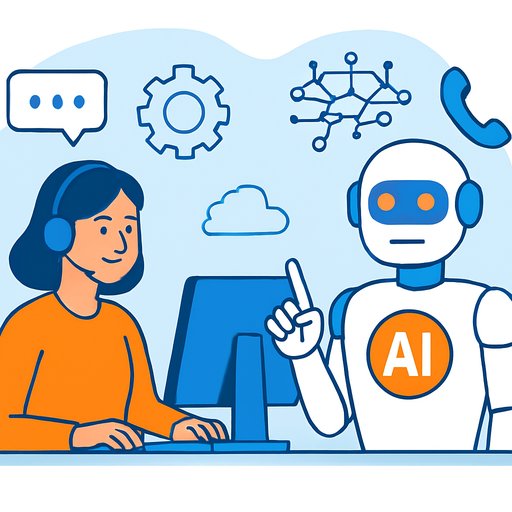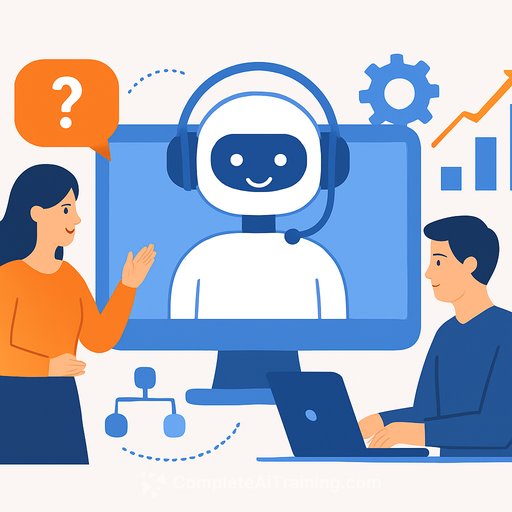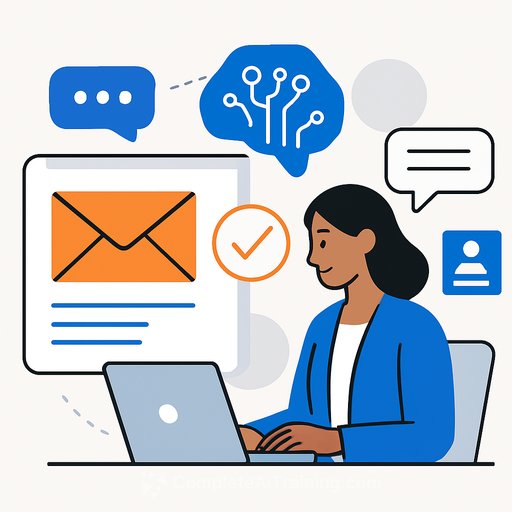Toyota's practical plan for contact center AI: empower agents, protect loyalty
Toyota runs a Brand Engagement Center that fields more than a million inquiries a year from drivers, prospects, dealers, and field offices. They're rolling out AI to speed up service and improve accuracy - without cutting agents out of the loop.
The early results: 4% of inquiries handled via self-service, a 20% reduction in average handle time, and 13% fewer call transfers. The aim is simple: get customers to the right expert fast, and make every agent more effective.
The stack: Amazon Connect + Salesforce
Toyota moved off an aging on-prem IVR and built on Amazon Connect with Salesforce as the CRM system of record. The vision is omnichannel routing with a single pane of glass so agents don't bounce between tools.
Core features include real-time transcription, automated summaries into Salesforce, and smarter routing based on who's calling and why. If a driver with a Camry calls during a recall window, the system can surface that context and offer a direct path to the preferred dealership.
What changed with generative and agentic AI
The initial roadmap focused on natural language understanding and routing. With generative capabilities, Toyota added automated call summaries. Amazon Connect Contact Lens produces a clean, standardized recap and pushes it into Salesforce for quick review and recordkeeping.
Legal teams benefit from plain-language summaries, and agents save time on note-taking. That clarity helps anyone picking up the case later to see what happened and what's next without digging through transcripts.
People-first: AI augments, it doesn't replace
Leaders Mitch Aubin and Bradley White are clear: the goal is to improve the human touch. By the time customers reach an agent, they've often tried to solve the issue elsewhere. Sending them back to full automation creates friction.
AI should give agents context, the next-best action, and faster access to answers - so they can personalize the conversation and resolve the issue in one sitting.
Results to watch
- Fewer transfers: Target was 5%; they achieved 13%. Better upfront routing gets customers to the right expert.
- Lower handle time: 20% reduction through transcription, summaries, and a single workspace.
- Self-service coverage: 4% handled by IVR today, with plans to responsibly expand what can be automated.
Omnichannel by design
Not every problem needs a call. Some are better handled via chat, especially when images help. Others are sensitive and deserve a human voice.
Toyota's plan is to route each issue to the channel that fits the context, then equip agents with everything they need in one screen.
Roadmap: better IVR, faster handoffs, cleaner records
The team will keep improving IVR to answer simple questions well - and get people to a human quickly when needed. Speed matters for both sides: customers get back to their day, and agents help the next person sooner.
One specific ask from a large-enterprise perspective: stronger multi-party speaker identification in transcription. Calls can include the guest, dealership, Toyota, and occasionally a fourth party. Clear attribution matters for accuracy and compliance.
What support leaders can copy from Toyota
1) Start with the agent experience
- Adopt real-time transcription to reduce manual note-taking.
- Auto-summarize every interaction into your CRM in plain language.
- Unify tools into a single agent view to cut swivel-chair time.
2) Route by intent and sensitivity
- Use caller recognition and recent events (e.g., recalls) to personalize routing.
- Match issues to channels: chat with image sharing for how-tos, voice for complex or emotional cases.
3) Measure what matters
- First-contact accuracy: reduction in transfers is a strong signal.
- Average handle time: transcription and summaries should lower it.
- Self-service coverage: expand cautiously, focusing on high-confidence intents.
- Quality and compliance: standardized summaries help legal and QA.
4) Build a practical AI IVR
- Limit IVR scope to questions you can answer with certainty.
- Offer quick exits to a human, no dead ends.
- Continuously tune prompts, intents, and knowledge sources.
5) Don't let governance lag
- Keep transcripts and summaries consistent and searchable.
- Define who can view, edit, and export conversation data.
- Audit speaker attribution on multi-party calls.
Tools and integrations worth considering
- Amazon Connect for cloud contact center, transcription, and Contact Lens summaries.
- Salesforce Service Cloud as the source of truth for cases and knowledge.
Bottom line
Toyota's approach is simple: use AI to remove friction, not people. Route smarter, summarize every call, and give agents a cleaner desk.
Do that, and you'll see fewer transfers, shorter calls, and more customers who feel heard.
Further learning
Your membership also unlocks:





